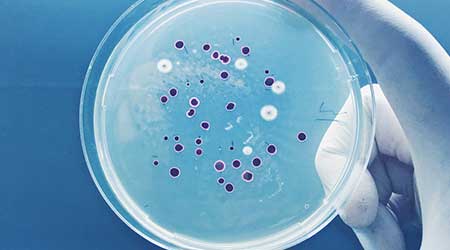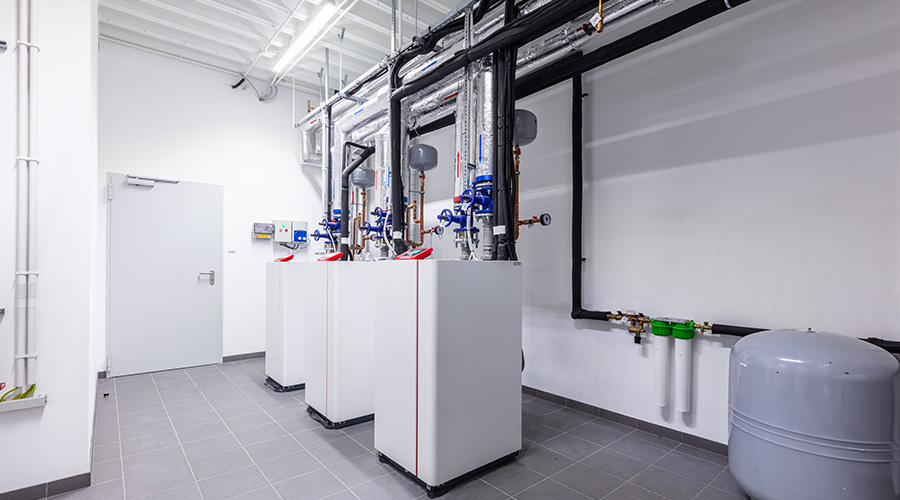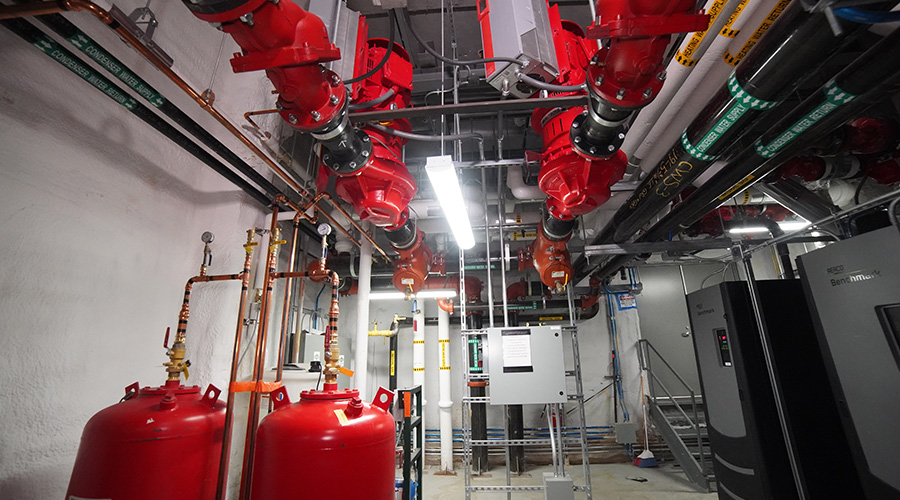5 Questions to Evaluate the Effectiveness of Germicidal Lighting
Facility managers must understand any potential negative impacts of deploying germicidal lighting. Here are five issues to keep in mind.
Question 1: What is the potential for the development of blue light resistant bacteria, particularly if such luminaires were to become widespread – essentially disinfecting the majority of the built environments they’re installed in for large portions of the day?
There seems to be general consensus that the way blue light impacts bacteria decreases the likelihood of developing resistance or tolerance to blue light compared to antibiotics. But there is less agreement as to whether this means it couldn’t happen under some real-world conditions. The proposed widespread use of this technology will substantially increase the opportunity for blue light resistance/tolerance to develop. Widespread use in less clean or controlled environments could prove to be more “nourishing” for bacteria compared to healthcare settings.
Other concerns:
• There will likely be significant opportunities for bacteria to be exposed to lower-intensity, sub lethal stress levels of blue light, potentially leading to tolerance.
• Only certain bacteria types have been studied up to now for resistance or tolerance.
• Real-world conditions will likely have blue light wavelengths and energy levels that vary from what was used in the studies conducted to date.
Studies generally conclude additional research is needed to further understand the potential development of blue light tolerance and resistance in different types of bacteria, and how different environmental variables impact this.
Question 2: Could the widespread implementation of such luminaires have a negative impact on the populations of ‘good’ bacteria (i.e., non-pathogenic or beneficial bacteria)?
For bacteria that live within human bodies, such as the beneficial microbiome in the human gastrointestinal system, ambient blue light technology poses no threat that we know of since the wavelengths only penetrate the first few layers of the epidermis. For bacteria (pathogenic or non-pathogenic) that live on the skin, within the first few layers of skin, within glands, or hair follicles, they will be impacted just like other bacteria living on any surfaces exposed to the blue light, potentially even shifting populations to a greater composition of bacteria types less sensitive to blue light.
However, since only a small percentage of skin will typically be exposed to blue light at any given time (due to clothing), the impact is small. Microbes living on the face and hands (or other exposed areas), if impacted, are generally repopulated from covered portions of the body, or from the surrounding environment. This is similar to what happens when we shower or wash our hands.
Regardless, there are still the questions of a) the potential negative impact on populations of pathogenic or non-pathogenic bacteria in the larger environment, and b) what the potential ramifications of those impacts could be.
Question 3: Are there potential direct damaging impacts to humans from long-term exposure to wavelengths in the 405nm range?
While research to date suggests the short-term hazards of blue light to human cells are minimal for some populations (i.e., healthy adults), we still don’t have a good grasp on the potential hazards presented to sensitive populations. Nor does it seem we have a grasp of the potential impacts from chronic/repeated exposure or long-term exposure. But again, some researchers would argue that the risk to non-sensitive populations is minimal even for chronic/repeated or long-term exposure.
Question 4: Could the widespread implementation of such luminaires have a negative impact on the development and maintenance of the human immune system, particularly considering that these luminaires are being marketed to schools?
The experts and manufacturers consulted, and literature reviewed, all indicated more research is needed to provide an answer.
Question 5: What are the potential impacts to the human circadian system from consistent exposure to wavelengths in the 405nm range throughout the day and into the evening?
There is potential for germicidal ambient blue luminaires to be used in a manner that doesn’t have a negative impact on our circadian systems. (This will depend on specific fixture spectra, the use of dimmable systems, specific occupant tasks, specific space configurations, and potential blue light hazards from use at higher intensities). Circadian stimulus calculations would be needed on a project-by-project basis to verify.
The bottom line is that there are still unanswered questions relative to the impacts on
• bacteria resistance and tolerance,
• microbial communities in the larger built environment,
• sensitive human populations,
• human cells from chronic/repeated exposure,
• human cells from long-term exposure,
• the human immune system, and
• the human circadian system.
Nevertheless, certain hospital, veterinarian, cleanroom, agricultural, food production, restroom, gym, and transportation settings may still be good candidates for this technology once the importance of the above unanswered questions have been weighed for the specific project being considered. More caution is warranted for settings like school classrooms, daycares, hospitality spaces, offices, and dormitory rooms, at least for now. But there are likely specific spaces within these settings, such as food prep areas or restrooms, that may still be appropriate. A night mode use may be appropriate for some of these settings as well.
In every case, relevant experts, such as medical professionals, microbiologists, epidemiologists, the manufacturers of the technology, etc., should be consulted to help determine how best to use them in the specific contexts being considered, or whether to use them at all instead of other options like portable UV lighting units. Otherwise there is a risk of creating environments misaligned with a given occupant population’s short- and long-term needs. This approach may be overcautious, and some researchers would argue that it is. But to make sure that the wider use of blue light improves life, it’s prudent the above questions have better answers before moving beyond these recommendations.
Marcel Harmon (marcel.h@branchpattern.com), PhD, PE, WELL AP, LEED AP O+M, is a senior associate with BranchPattern.
An expanded version of this article was originally published on the Evolution Institute's This View of Life Magazine. To view the original article, please visit https://evolution-institute.org/the-potential-evolutionary-mismatches-of-germicidal-ambient-lighting/.
Related Topics:













